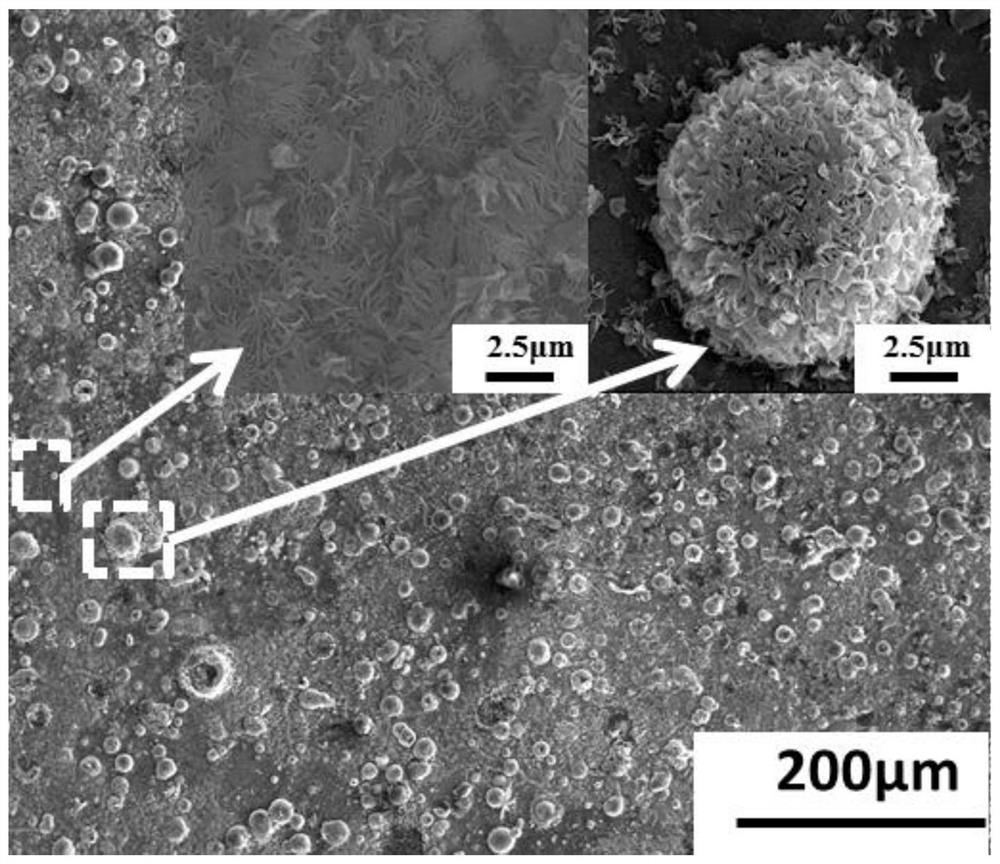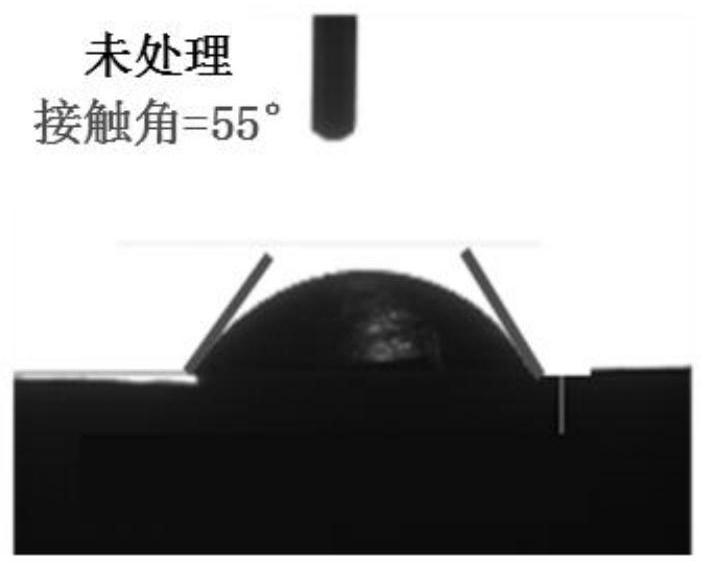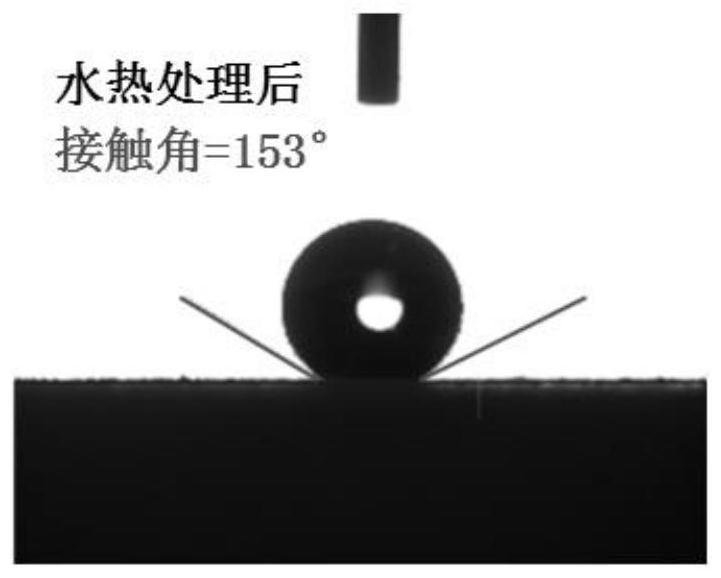A method for constructing a super-hydrophobic corrosion-resistant conversion coating on the surface of a magnesium-lithium alloy and a magnesium-lithium alloy with super-hydrophobic corrosion resistance
A magnesium-lithium alloy and super-hydrophobic technology, applied in the coating process of metal materials, etc., can solve the problems of environmental pollution, high price, unfavorable promotion, etc., and achieve improved corrosion resistance, good corrosion resistance, and reduced contact area. Effect
- Summary
- Abstract
- Description
- Claims
- Application Information
AI Technical Summary
Problems solved by technology
Method used
Image
Examples
Embodiment 1
[0040] Process the Mg-9Li alloy into a 10mm×10mm×2mm cube, inlay it with epoxy resin, then polish it with 400, 600, 800, 1000, 1500 mesh sandpaper in turn, and then use 0.05μm alumina polishing powder to suspend The solution was mechanically polished, and finally ultrasonically cleaned with alcohol and acetone for 10 minutes respectively, and dried. Add stearic acid to 50mL of ethanol, add an equal volume of distilled water and stir at the same time to obtain a mixed solution (the concentration of magnesium stearate in the mixed solution is 0.01M); use a graduated cylinder to measure 70mL of the mixed solution and place it in a 100mL reaction In the kettle, put the processed samples into the reaction kettle, then place the reaction kettle in the electric furnace, keep it at 110°C for 2 hours, and finally, cool it to room temperature with the furnace, take it out and dry it.
[0041] Observation by scanning electron microscopy reveals that a conversion film has been constructed...
Embodiment 2
[0044] Process the Mg-9Li alloy into a 10mm×10mm×2mm cube, inlay it with epoxy resin, then polish it with 400, 600, 800, 1000, 1500 mesh sandpaper in turn, and then use 0.05μm alumina polishing powder to suspend The solution was mechanically polished, and finally ultrasonically cleaned with alcohol and acetone for 10 minutes respectively, and dried. Add stearic acid in 50mL ethanol, add distilled water of equal volume and stir simultaneously, obtain mixed liquor (the concentration of magnesium stearate in the mixed liquor is 0.01M); In a 100mL reactor, put the treated sample into the reactor, then place the reactor in an electric furnace, keep it at 130°C for 2 hours, and finally, cool it to room temperature with the furnace, take it out and dry it.
[0045] Observation by scanning electron microscopy shows that a conversion film is formed on the surface of the magnesium-lithium alloy. The conversion film is composed of a spherical substructure and a sheet-like substructure. ...
Embodiment 3
[0047] The difference from Example 2 is that the temperature of the hydrothermal reaction is 120°C.
[0048] Observation by scanning electron microscopy shows that a conversion film is formed on the surface of the magnesium-lithium alloy. The conversion film is composed of a spherical substructure and a sheet-like substructure. The angle is 151°. Through electrochemical tests, the AC impedance of the magnesium-lithium alloy with a superhydrophobic conversion film is 5100 ohm cm 2 (Such as Figure 4 shown).
PUM
| Property | Measurement | Unit |
|---|---|---|
| thickness | aaaaa | aaaaa |
| thickness | aaaaa | aaaaa |
| thickness | aaaaa | aaaaa |
Abstract
Description
Claims
Application Information
 Login to View More
Login to View More - R&D Engineer
- R&D Manager
- IP Professional
- Industry Leading Data Capabilities
- Powerful AI technology
- Patent DNA Extraction
Browse by: Latest US Patents, China's latest patents, Technical Efficacy Thesaurus, Application Domain, Technology Topic, Popular Technical Reports.
© 2024 PatSnap. All rights reserved.Legal|Privacy policy|Modern Slavery Act Transparency Statement|Sitemap|About US| Contact US: help@patsnap.com










